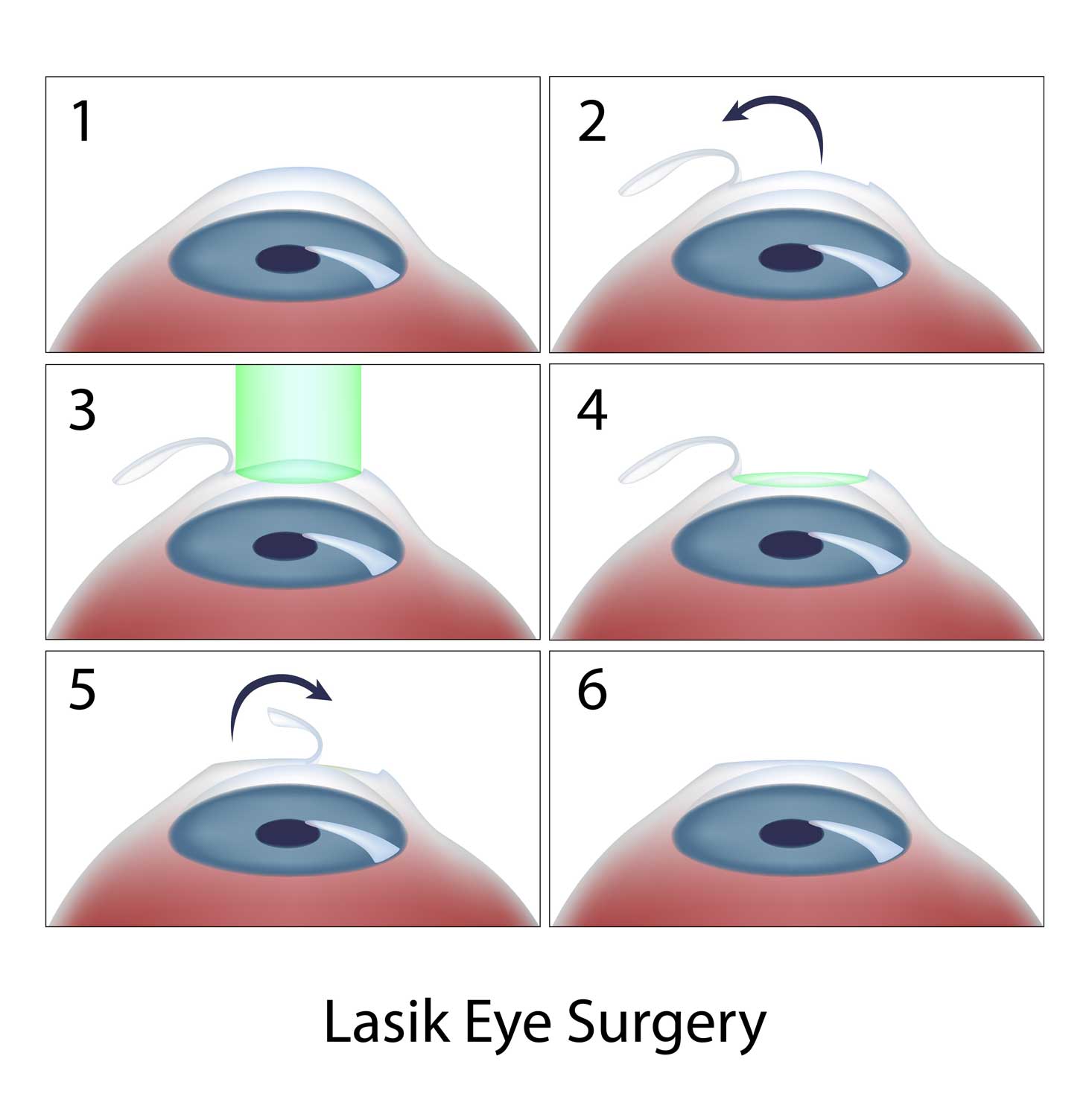Laser Surgery
Refractive Laser Surgery
Refractive laser surgery is any laser procedure resulting in sculpting of the cornea to alter the refraction (bending) of light rays into the eye. The result is eliminating or reducing the dependency on glasses or contacts and correcting myopia, hyperopia and astigmatism.
Laser In-Situ Keratomileusis (LASIK)
LASIK has become the standard of care in refractive surgery and is used to correct nearsightedness, farsightedness and astigmatism. In this procedure, the surgeon creates a hinged corneal flap before the excimer laser is applied to vaporize a small amount of corneal surface. After the laser is used, the corneal flap is replaced, bonding almost instantly and without stitches.
IntraLase is the latest advancement to LASIK technology which features bladeless flap creation. Originally, a microkeratome (rotating manual blade) was used to create the corneal flap.
1. Eye alignment 2. Corneal flap creation 3. Stromal ablation 4. Laser polishing 5. Flap realignment 6. Surgery complete
Wavefront-Guided Laser Surgery
New laser systems are constantly being approved by the Food and Drug Administration for wavefront custom ablations. Current wavefront approval ranges vary depending on which laser system is used by your doctor’s laser center.
While wavefront does not guarantee perfect outcomes, it is incrementally better than traditional laser refractive surgery. The chances of achieving 20/20 uncorrected visual acuity after the procedure is statistically higher with wavefront when compared to traditional surgery. The chances of needing an enhancement are statistically lower. An easy way to understand wavefront technology is to compare it to custom tailoring. The laser sculpts the patient’s prescription onto your cornea. Variable laser pulses (ablation pattern) accomplish the sculpting for different prescriptions. For example, myopic patients receive more pulses centrally than peripherally and patients with astigmatism receive more pulses along the steep meridian compared to the flat meridian of their cornea.
The only difference between wavefront and traditional laser refractive laser surgery is how the laser/computer calculates and applies the ablation pattern. The ablation pattern is customized based on your prescription and the presence of higher-order aberrations (HOAs). HOAs are alterations/imperfections in the visual system.
The way to determine the degree and type of HOA is to measure with a special instrument called an aberometer. While all patients should benefit to some degree from wavefront custom ablations, the patients who should benefit the most are those who possess more significant HOAs.

